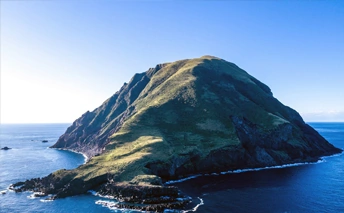System Development to Support the Creation of Seagrass Beds, a Blue Carbon Ecosystem
Release:
Update:
NEW

Seagrass beds are critical for biodiversity conservation and promotion of decarbonization
Seagrass beds, often called the "cradle of the sea", are home to a diverse range of marine life. In addition to being a feeding ground for creatures that eat seagrass and algae and a place for fish and shellfish to spawn and rear their young, seagrass beds have also attracted attention in recent years as blue carbon ecosystems that absorb carbon dioxide (CO2). However, due to factors such as the rise in sea temperatures caused by global warming and the increase in herbivorous marine species, a phenomenon known as seagrass desertification (isoyake in Japanese) is progressing across Japan, creating a serious issue. The regeneration and creation of seagrass beds are attracting attention as a way to address issues such as biodiversity conservation and decarbonization promotion.
System Development to visualize seagrass bed growth potential
Until now, obtaining environmental information on underwater seagrass beds has been challenging, and there have been issues with the lack of lateral use of information on environmental factors that determine the beds' distribution and growth.
To resolve this issue, a research team assembled from members of Nippon Koei's Research & Development Center and Global Environment Division has developed a system called "MobaDAS" that visualizes the current and future potential for seagrass growth based on environmental information. MobaDAS integrates a wide range of technologies related to the aquatic environment, including existing scientific knowledge, analysis of satellite images with various wavelengths and properties, and prediction of the underwater environment using hydrological and water quality models to comprehensively evaluate the suitability of each location for seagrass beds to develop.
This system was designed to be used by private companies, local governments, fishery cooperatives, NGOs, and the like to create and maintain seagrass beds. It allows users to identify areas of the sea suitable for seagrass growth and to monitor real-time information on seagrass beds in an integrated manner. Moving forward, the MobaDAS research team will continue to conduct further research, such as expanding the types of seagrass beds that can be evaluated and the target waters. The team aims to launch the service by 2026 after conducting demonstration experiments and so forth.

Wins first place in NEDO-sponsored satellite data application development contest
In January 2025, MobaDAS won first place in the "NEDO Challenge, Satellite Data for Green Earth" satellite data utilization development contest hosted by the New Energy and Industrial Technology Development Organization (NEDO) (Theme 1: Building a Carbon Credit Infrastructure (Green/Blue Carbon, etc.)). In this contest, MobaDAS' s intensive use of satellite data was highly evaluated, particularly for enhancing accuracy by using simulation models to assess the potential for seagrass bed growth and providing services using near-real-time information.

Moving forward, Nippon Koei will continue to develop solutions that use satellite data and environmental information to solve various societal issues. It will also work on topics related to the green sector to achieve carbon neutrality.
Comments from the developers
Seagrass beds perform the two essential functions of contributing to a decarbonized society through blue carbon and helping to conserve coastal ecosystems. As such, taking measures to counteract the aggravation of seagrass desertification has become a pressing issue for society as a whole. Meanwhile, numerous technological and societal challenges are involved in creating seagrass beds, making it far from straightforward.
In this project, members of the Research & Development Center, the Environment Department, and the International Environment Department applied their respective areas of expertise to develop a system that provides useful information in these situations. From here on, we plan to explore how the system can be applied to the actual creation of seagrass beds and continue our efforts to contribute to addressing this societal challenge.




